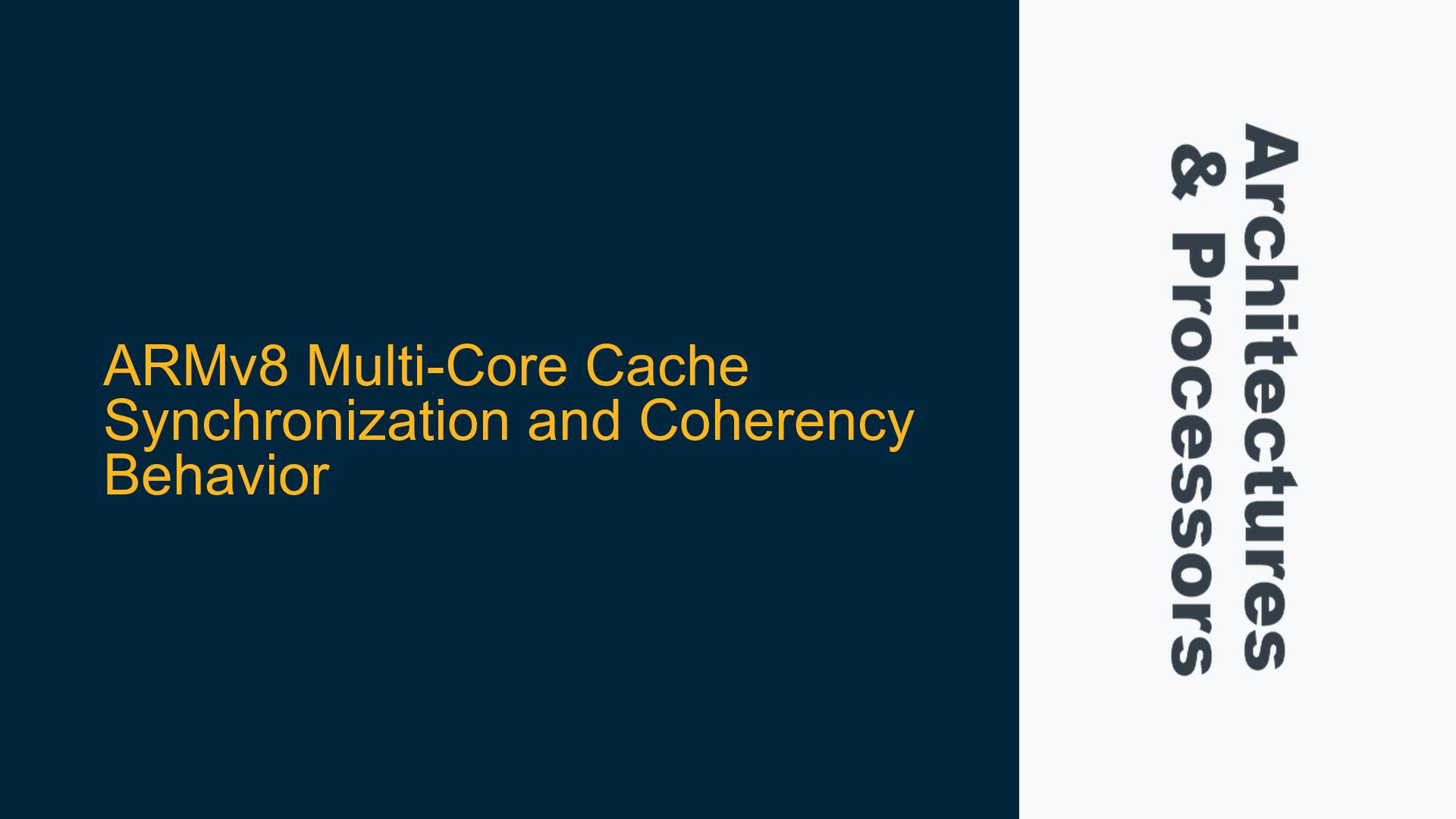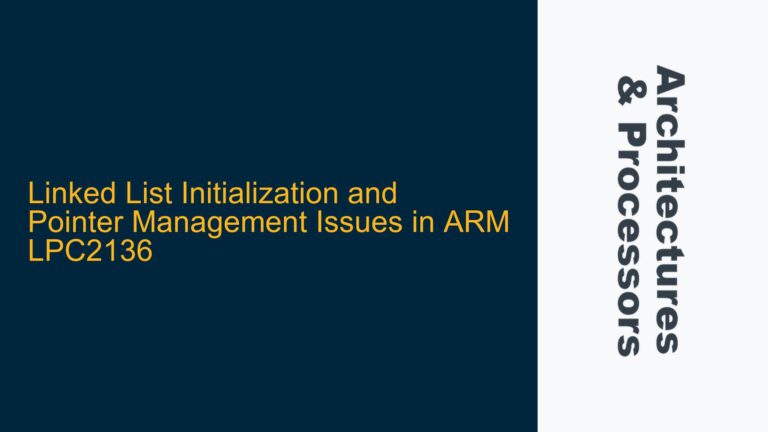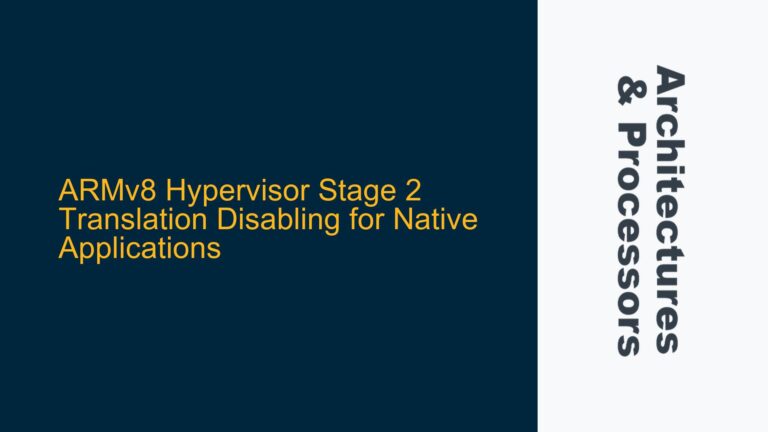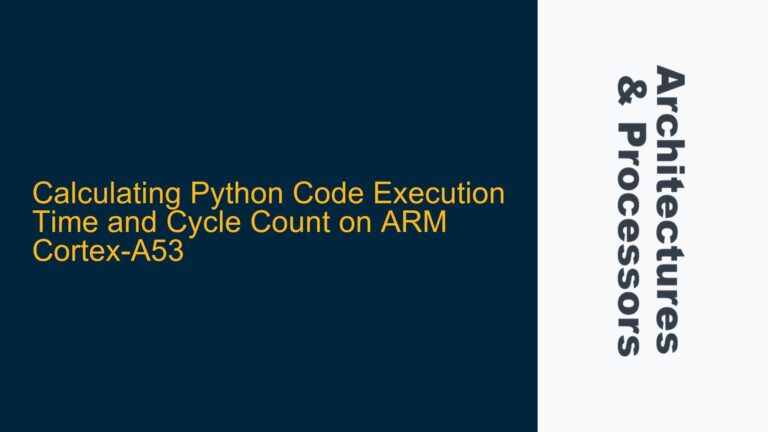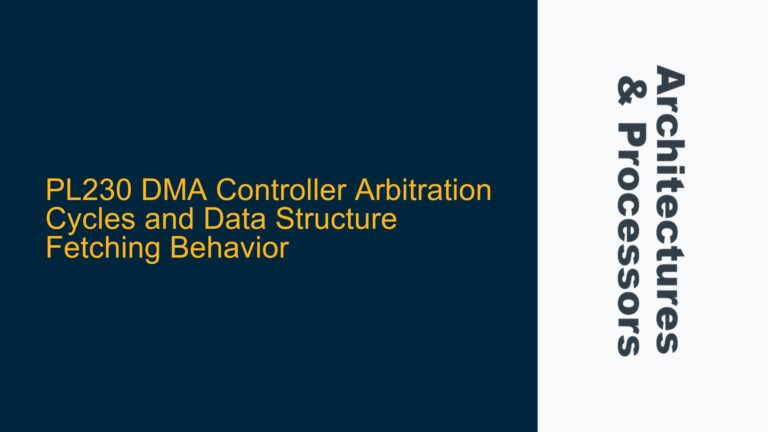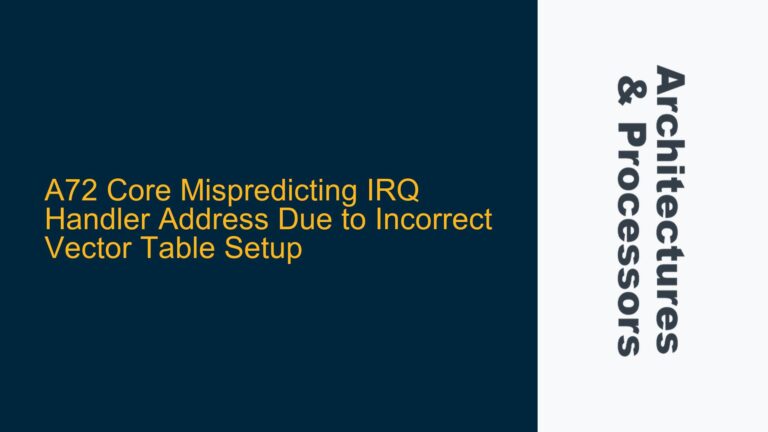ARMv8 Multi-Core Cache Line Updates and Coherency Mechanisms
In ARMv8 multi-core systems, cache coherency is a critical aspect of ensuring data integrity across cores. When multiple cores access and modify the same memory location, the system must guarantee that all cores observe a consistent view of memory. This is particularly important when cores have private L1 caches, as in the case of ARM Cortex-A35 cores in the i.MX8QXP processor. The scenario described involves two cores caching the same 64-byte line from RAM, each modifying a different byte within that line, and then flushing their L1 caches. The question is whether the final state of the line in RAM will reflect both modifications or if data corruption will occur.
The ARMv8 architecture employs a hardware-based cache coherency protocol, typically MESI (Modified, Exclusive, Shared, Invalid), to manage cache line states across multiple cores. When a core modifies a byte in a cache line, the cache line transitions to the "Modified" state, indicating that the data in the cache is more recent than the data in RAM. If another core attempts to access the same cache line, the coherency protocol ensures that the most up-to-date data is provided, either by invalidating the other core’s cache line or by transferring the modified data between caches.
In the described scenario, both cores modify different bytes within the same cache line. When the cores flush their L1 caches, the cache coherency protocol ensures that both modifications are propagated to RAM without corruption. This is because the cache line is treated as a single unit for coherency purposes, and the protocol ensures that all modifications are merged correctly. The absence of corruption in the test results confirms that the cache coherency mechanism is functioning as expected.
MESI Protocol and Shareable Memory Regions
The MESI protocol is central to maintaining cache coherency in ARMv8 multi-core systems. Each cache line can be in one of four states: Modified, Exclusive, Shared, or Invalid. These states determine how the cache line is managed and how updates are propagated between cores.
- Modified (M): The cache line has been modified by the core and is different from the data in RAM. The core holding the Modified line is responsible for writing the data back to RAM when the line is evicted or flushed.
- Exclusive (E): The cache line is clean and matches the data in RAM. Only one core holds this line, and it can be modified without notifying other cores.
- Shared (S): The cache line is clean and matches the data in RAM. Multiple cores may hold this line, and any modification requires coordination between cores.
- Invalid (I): The cache line does not contain valid data and must be fetched from RAM or another cache if accessed.
In the scenario described, when both cores cache the same line and modify different bytes, the cache lines transition to the Shared state. The MESI protocol ensures that both cores are aware of each other’s modifications and that the final state of the line in RAM reflects both changes.
Additionally, ARMv8 introduces the concept of shareable memory regions. Software must mark memory regions as shareable to inform the hardware that multiple cores or masters may access the location. This triggers the hardware coherency mechanisms, ensuring that all cores observe a consistent view of memory. In the test scenario, the memory region containing the cache line must be marked as shareable to enable the coherency protocol to function correctly.
Implementing Cache Flush and Data Synchronization Barriers
To ensure correct behavior in multi-core systems, software must properly manage cache flushes and data synchronization barriers. Cache flushes ensure that modified data in the cache is written back to RAM, while data synchronization barriers ensure that all cores observe memory operations in the correct order.
In the described scenario, both cores flush their L1 caches after modifying the cache line. The cache flush operation writes the modified data back to RAM, ensuring that the final state of the line reflects both modifications. However, the order in which the flushes occur can impact the final result. If one core flushes its cache before the other, the second core’s modifications may overwrite the first core’s changes. To prevent this, software must use data synchronization barriers to ensure that all cores complete their modifications before any cache flushes occur.
ARMv8 provides several instructions for managing cache flushes and synchronization barriers:
- DC CVAU (Data Cache Clean by Virtual Address to Point of Unification): Cleans the cache line by writing modified data back to RAM.
- DSB (Data Synchronization Barrier): Ensures that all memory operations before the barrier are completed before any subsequent operations.
- DMB (Data Memory Barrier): Ensures that memory operations before the barrier are observed in the correct order by other cores.
In the test scenario, the following sequence of operations should be performed to ensure correct behavior:
- Both cores modify their respective bytes in the cache line.
- A DMB instruction is executed to ensure that the modifications are observed in the correct order by other cores.
- Both cores flush their L1 caches using the DC CVAU instruction.
- A DSB instruction is executed to ensure that all cache flushes are completed before proceeding.
By following this sequence, software can ensure that both modifications are correctly propagated to RAM without corruption. The use of synchronization barriers is critical in multi-core systems to prevent race conditions and ensure data integrity.
In conclusion, the ARMv8 architecture provides robust mechanisms for maintaining cache coherency in multi-core systems. The MESI protocol, shareable memory regions, and synchronization barriers work together to ensure that all cores observe a consistent view of memory. Proper use of these mechanisms is essential for developing reliable and efficient multi-core embedded systems.
